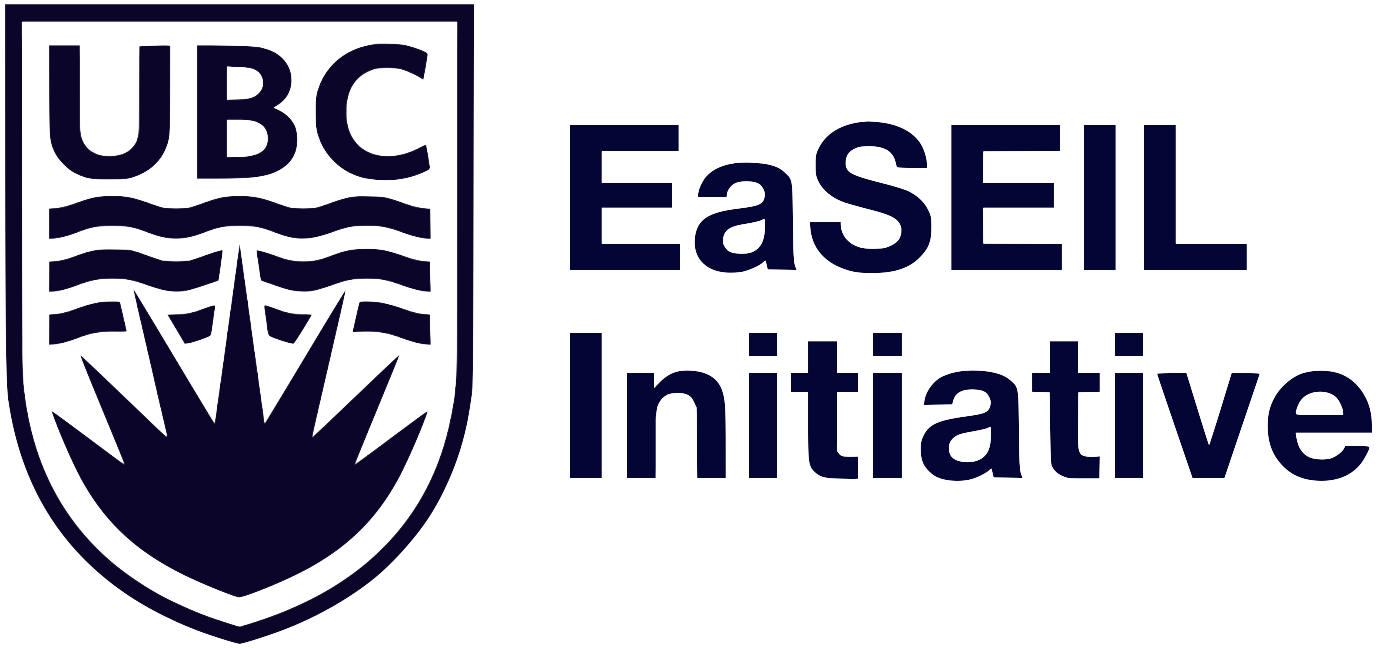Community of Practice Activities & Tools
Meeting Access

Faculty are busy and to facilitate participation, we offered a hy-flex format for meetings, meaning that participants could join in person or online. This requires additional staffing (1 or 2 people in addition to the CoP facilitator) and technology to provide a positive experience for online attendees.
Our approach included the use of an Owl which created a more ‘in person-like’ sound and visual experience for online attendees. One person, the CoP facilitator, led the in person meeting activities and another person, faculty developer/EaSEIL leader, supported the online participants (e.g., answering questions, sharing links, facilitating breakouts, bringing online comments into the in person discussion). A third person, the lead researcher, recorded meeting notes for evaluation/research purposes that were also edited after meetings for sharing back as a resource for the CoP.
Meeting Agendas
- As a facilitated CoP, meetings were structured in a thirds approach to provide a variety of activities to support the wide spectrum of member motivations and interests, so that participants would leave feeling that the meetings were a good use of their time. Participants provided link to slides and resources.
- We also included structures for social connection: We provided food at meetings, offered optional social time before the start, and allowed an additional 30 minutes afterward for informal conversation and lingering
Meeting Openings
The majority of instructors were interested in learning more about Indigenous histories and perspectives as part of their motivation for joining EaSEIL. Meetings opened with a Land and Peoples Acknowledgement (which are part of the culture at UBC) as an opportunity for reflection and the facilitator to share a curated collection of personal learning and teaching resources related to these topics. Land and Peoples Acknowledgements were intended as learning moments and as models for instructors—they represented one way Land acknowledgements could be included in a meeting or class setting. They also acted as reference points for later discussions.
Examples of Land and Peoples’ Aknowledgements:


Type of Meeting Activities
Meeting activities were tailored to align with instructors’ needs and interests, ensuring efficient use of time and maximizing value for CoP members. Time in meetings was used using a thirds model approach including individual work, knowledge and experience exchange, and collaborative work. For each activity, the facilitator provided clear instructions, expectations, and a rationale—both in writing and verbally. Activities included:
- Individual work time and folders
- We offered opportunities for each member to think and reflect individually (using session specific handouts or the planning and reflection tool for curricular design) to ground their ideas or questions prior to sharing in small/large group discussions.
- Upon arrival at each meeting, members received a personal folder where their individual work was stored. The contents of these folders were also shared digitally for easy access. By keeping records in one place, members could revisit their reflections and ideas over time, supporting a sense of continuous learning.
- Large/Small Group Discussions where knowledge and experience exchange led to shared meaning making and collaborative production of course design tools and resources.

- Guest Speakers
- CoP instructor member sharing curriculum development efforts in a formal presentation
- CoP support partner office sharing strategies and resources in a formal presentation
- Invited guest speakers from outside the CoP and institution
Meetings Closings
To maintain momentum and strengthen connections, we closed each meeting with a consistent structure designed to raise awareness of existing resources, highlight the work of CoP members and partners, and expand the network of support. The wrap up structure included:
- Opportunity for individual reflection/setting intentions through exit slips or the planning and reflection tool for curricular design.
- Reminders of upcoming meetings, additional learning events/grants at institution and beyond, Canvas resources, and availability of 1-1 with facilitator

Fostering Member Engagement Through Ongoing Communication
The facilitator was the main point of contact to continually connect and bring people together, to coordinate meetings and events. Communications via e-mail were essential to maintain the group goind and individuals engaged.
- The CoP (as a group) received regular communications about meetings and opportunities with embedded links or attachments to facilitate engagement
- The facilitator provided individual support and guidance through personal communications, which is important when there is a wide spectrum of participant motivations and interests. Through these personalized communications the facilitator followed up about specific ideas, provided feedback on curricular development efforts, addressed questions raised by CoP members, shared specific resources.



